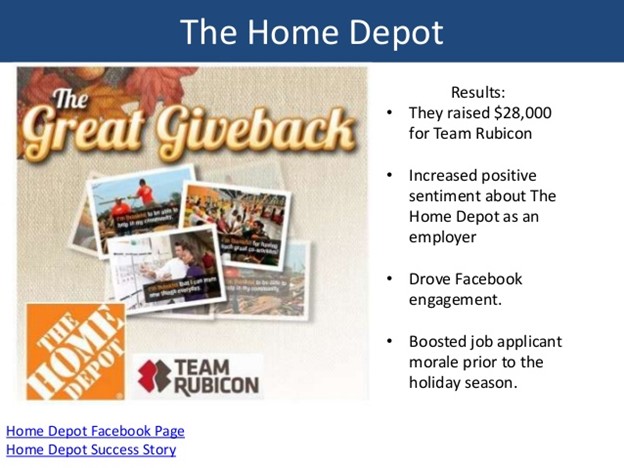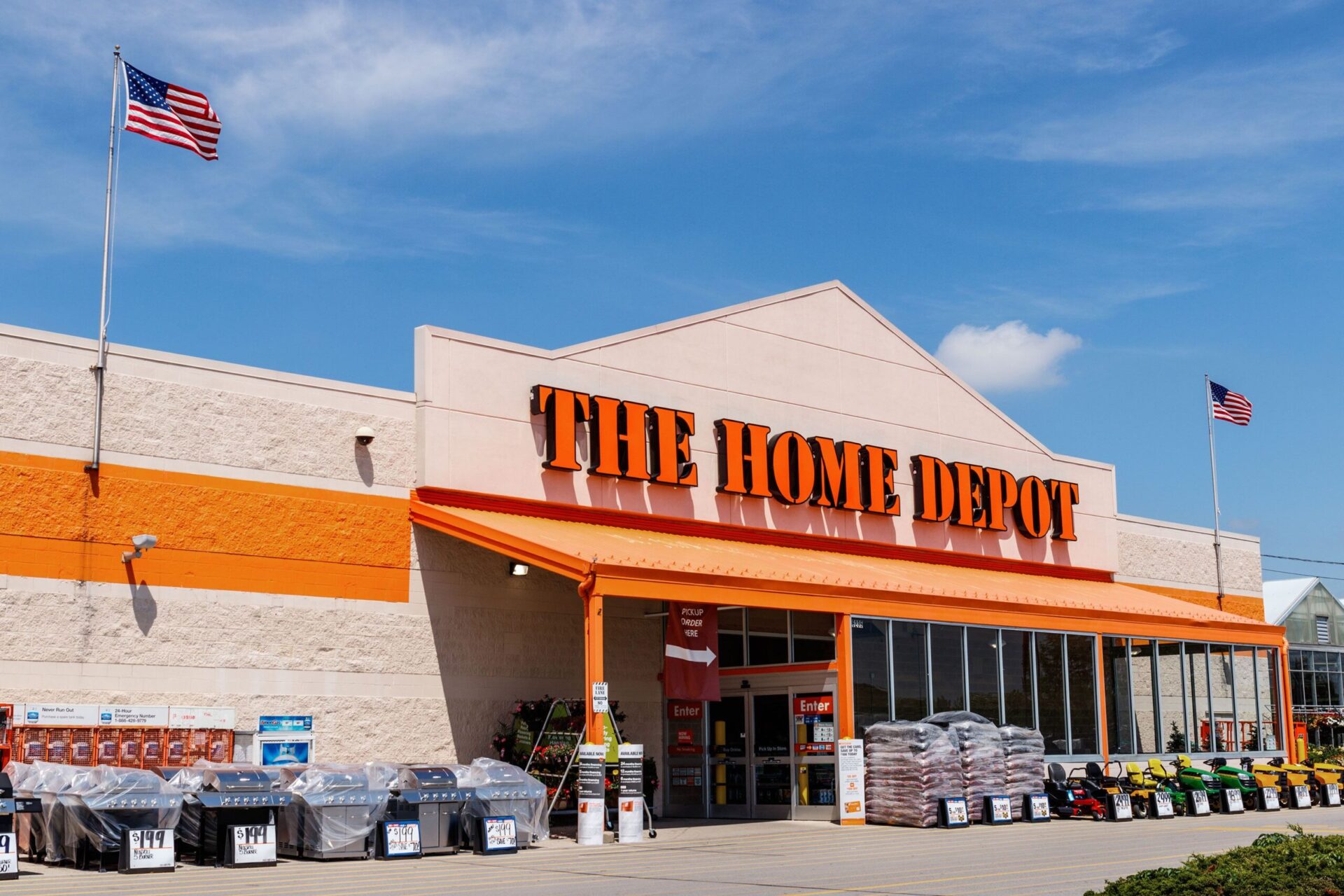Bernie Marcus and Arthur Blank co-founded Home Depot on June 29, 1978, after being fired from Handy Dan, a small chain of home improvement stores. Their vision was to offer “warehouse stores filled from floor to ceiling with a wide assortment of products at the lowest possible prices” along with superior customer service provided by knowledgeable staff that is trained enough to handle customers well.
This vision became a reality after acquiring sufficient capital from a New York-based investment banker. They opened the first 2 Home Depot stores on June 22, 1979, in the company headquarters, Atlanta, Georgia. Home Depot grew rapidly in a short period of time and finally went public in 1981. In 1986 Home Depot broke the $1 billion mark in sales with 50 stores that expanded into eight markets.
Home Depot revolutionized the home improvement industry by offering a wide selection of merchandise, low prices, and superior customer service to both the professional contractor as well as the do-it-yourself (DIY) patron. The in-store inventory contains premium products imported from more than 40 countries, including 30,000 to 40,000 different types of building materials, home improvement supplies, appliances, and lawn and garden products. Additional items are available through Home Depot’s web site at www.homedepot.com.
In addition, merchandise is localized throughout each store to match the area’s specific market needs. Interior and exterior installation services are available through Home Depot for items such as doors, heating and cooling, solar power systems, cabinets, flooring, sheds and storage systems, and others.
Today Home Depot is the largest home improvement retailer in the world and the second-largest U.S. retailer after Wal-Mart. The 2,295 stores located in all 50 states, the District of Columbia, Puerto Rico, U.S. Virgin Islands, Guam, ten Canadian provinces, China, and Mexico, along with its e-commerce site, employ approximately 400,000 people. It sells more than 30,000 products in the store and more than 1 million product online.
Marketing Communications of the Home Depot
Home Depot has a unified multi-channel marketing communications in place that clearly communicates the brand’s history, values, service, products and mission through compelling images and written and video content.
Unlike a lot of once successful brick and mortar brands such as RadioShack, Blockbuster and Forever 21 who has failed to keep up with the times and filed for bankruptcy, Home Depot has not only survived, but thrive in this technological era by placing huge emphasis on digital marketing to engage consumers.
Home Depot’s image is consistent throughout all company owned channels from retail, events, employees, website and social media, effectively securing its leading market position in the home improvement space and as a well-loved consumer brand. It has decided to cut down on print which now only comprises of 10% of the advertising budget compared to 36% of digital. For example, Home Depot has managed to go viral on TikTok, which has surpassed Facebook and Instagram in downloads in 2019. The brand went viral with the Home Depot theme song.
Target Audience/Goal of Home Depot
Home Depot breaks down their target customers into three categories. The first category is what you call the “DIY” customers. DIY is short for Do-It-Yourself. The second category is the Do-It-For-Me (DIFM) customers. The third category are professional customers who are primarily trained contractors, remodelers, repairman, interior designers, small business owners and tradesmen. Baby Boomers who once dominated the home improvement sales market are shifting from DIY to DIFM. Millenials are now coming-of-age and becoming homeowners, making up 76% of new home buyers market in recent years, therefore presenting a huge opportunity for Home Depot.
The overall goal of Home Depot marketing communications is to build a solid relationship with mostly American home enthusiasts through online engagement by producing games, challenges, discounts, contests, memes and theme songs on social media and through influencers that can go viral easily. The digital channels directs customers to physical locations for in-store pickups. The Home Depot mobile app facilitates the customer’s buying process by helping indecisive buyers with visualization technology to match colors and shades to rooms and furniture.
It is evident from the brand’s tagline “How doers get more done” plastered all over promotional materials that the goal is to attract DIYers and other DIFMs through its marketing communications messages highlighting its diverse and massive product offerings and services, allowing customers to find everything they need for their home under one roof. Home Depot has successfully transformed itself into the de facto home lifestyle brand by also offering inspiration, workshops and how-to-guides for home decor, repairs and renovation.
Integration
As mentioned, Home Depot has successfully integrated an omni-channel marketing communications strategy to deliver the same optimized experiences a consumer would get online and offline.
Consistency across executions
Home Depot is consistent in their look, sound and feel for each of their marketing platform. Its branding and marketing communications is consistency across execution in their offline medium. The company’s iconic “Big Orange” sign is clearly visible in the Georgia headquarters, on all retail outlets from the storefront, shopping carts, interior design and order pick-up lockers to employees apron uniforms and company t-shirts for workshops and events.
Consistency across media
All promotional materials are consistent across media channels. The signature sign is clearly stamped on all offline and online entities from physical office and store locations, events and workshops to the company’s official website, mobile app and social media channels.
Orange simulates more activity and the white fonts stamped diagonally upright represents success. The square is symbolic of transport freight crates. Since Home Depot is targeted at home improvement enthusiasts of the DIY movement, the colors, font and “how doers get more done” tagline are visibly in line with the overall narrative.
Connecting across media
Home Depot’s community of home doers are highly engaged across the company’s different mediums. The official website which includes the e-commerce platform, blog, forums, inspiration links to the social media channels and vice versa so users can easily check out different communication channels and subscribe to keep updated with home improvement news.
Home Depot’s online presence also prominently include the store addresses and upcoming events and workshops where customers can further emerged themselves in the Home Depot experience with their families. All assets are connected.
Home Depot’s Instagram share-a-photo about home contests and hashtags, Facebook games, TikTok’s Home Depot theme song challenge, its ‘How-To’ blog and curated Pinterest feed of home improvement images all seamlessly direct users to the e-commerce store which then drive customers to the nearest store location to pick-up their online purchases.
45% of Home Depot consumers visits homedepot.com first. The company makes the same employees responsible for sales in both online and offline channels in the same location. The prices and product inventory on the company’s e-commerce site are mapped to the store location. Home Depot employees on the floor also double up as content creators for the company’s blog so there is consistency in the customer service experience virtually and face-to-face.
Blending Content Across Media
Home Depot has blended content creatively including user generated content creating something novel and dynamic in the process. Fans submit home improvement videos and photos videos to Home Depot social media challenges which are featured prominently on company own assets.
Also Read: Amazon – Delivering A To Z Of Business And Success
Media used for communications at Home Depot
Social Media
According to Sprinklrs’ vertical leaderboard (2015), Home Depot’s social media won the top spot for impressions and engagement among 18 retailers including Macy’s, JCPenny, Walmart and Target. Home Depot has successfully maintained it leading market position in the home improvement industry by shifting their marketing communication dollars to digital assets and building a loyal community of doers through social media. Home Depot is named one of the world’s most innovative company in 2017 because revenue has increased without opening more stores in 3 years.
Home Depot experiments on Facebook with games to entertain consumers, sponsored pay-per-click ads tailored to DIYers, and recruitment tailored based on data gathered from their profile such as posting up ads in Spanish to find bilinguals.
The recruitment effort on Facebook garnered more than 100 resumes over the summer and was considered successful enough for Home Depot to continue in the future. The company has set up a career section on the Facebook page:

YouTube
Home Depot has a community of over 293,000 subscribers on YouTube. Existing customers and new viewers can get to know Home Depot better through the company’s video content about yearly reviews, employee showcase, mission, and useful How To home improvements and commercials branded with the company’s trademark “Big Orange”.
YouTube has a large in-built audience where Home Depot can tap into using their channel as a first point of contact in the customer experience journey and provide an immersive video experience online.
These regular short but high-quality and meaningful videos attract, engage and retain DIY home enthusiasts searching for guidance who are not yet Home Depot customers and engage them to spend more time on home products discovery and eventually convert them to paying customers on the Home Depot e-commerce shop.
Home Depot photo challenges and meme engage and grow the community through Instagram hashtags and build the brand virally.
TV Ads
There are over 619 nationally aired TV commercials for Home Depot and 12,613 airings. Home Depot TV ads are no longer one size fits all but are now tailored according to the consumer profile. Two people with different psychological and personality profiles watching television in the same neighbourhood at the same time would be shown different types of TV commercials that triggers their behavior.
To read more content like this, subscribe to our newsletter.
[wpforms id=”320″ title=”true”]
